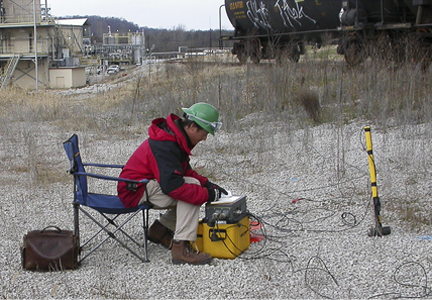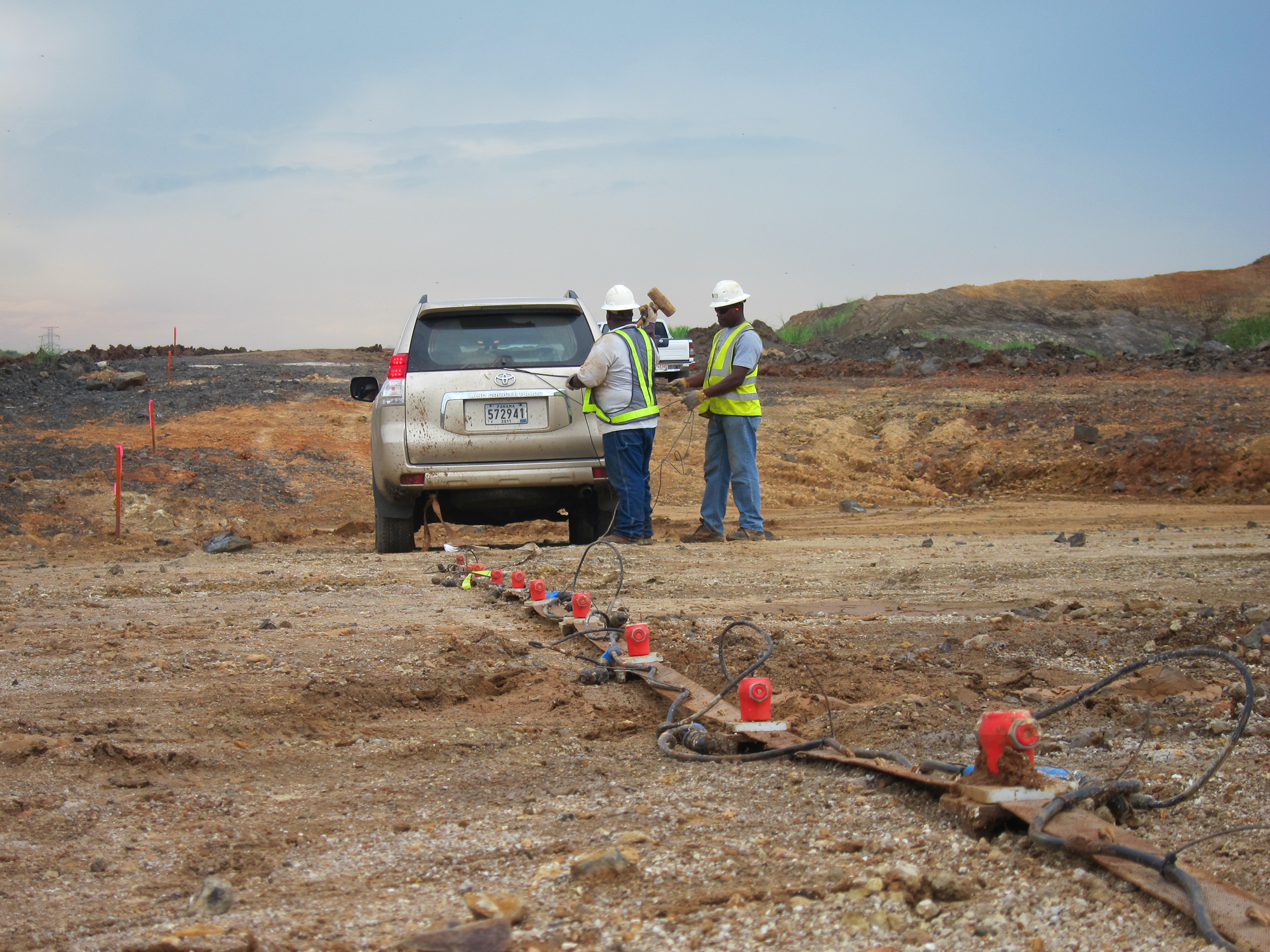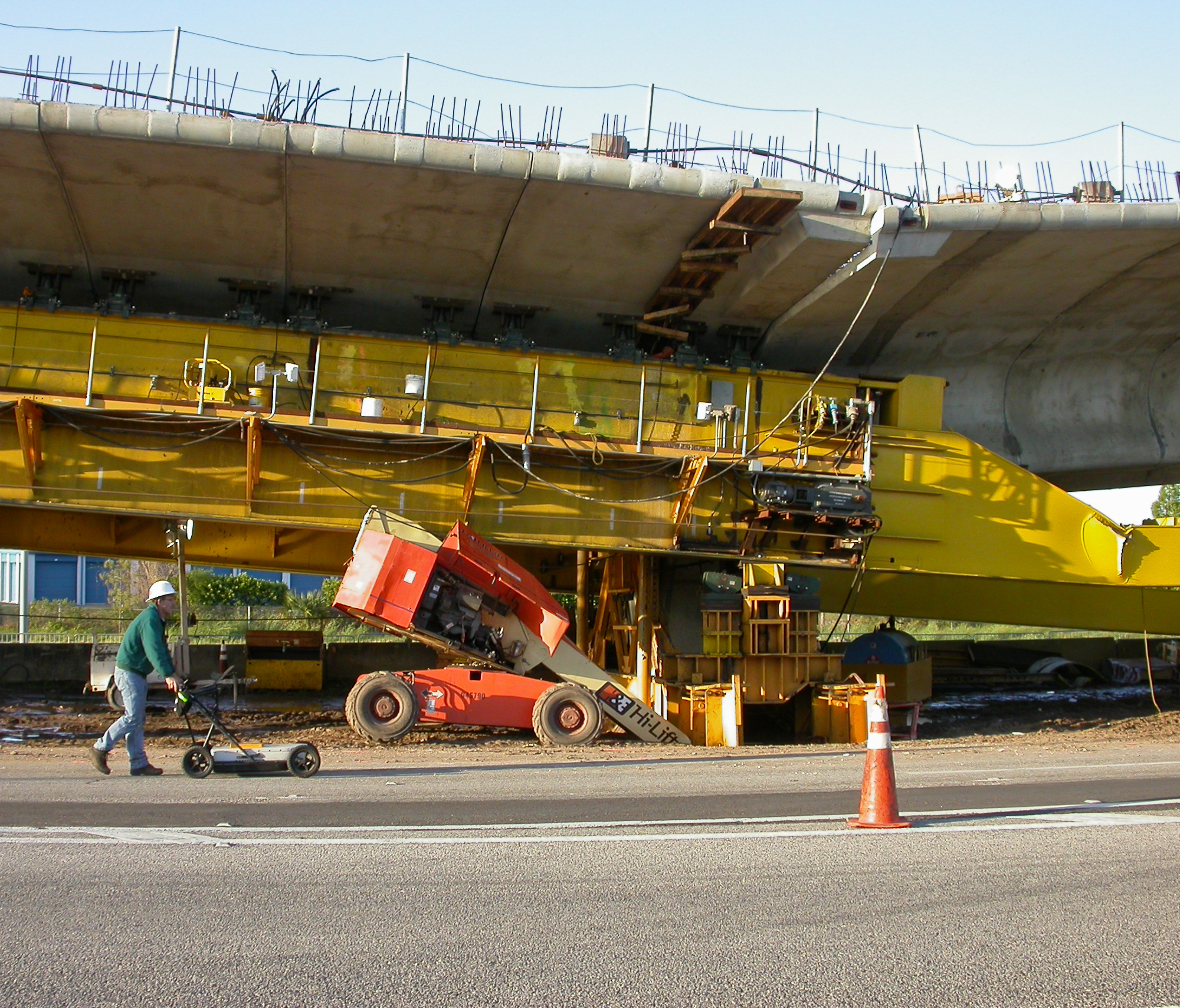Mapping Sediment Thickness
Polk County, Florida

Bathymetric and sub-bottom surveys were conducted within a clay settling pond at a Phosphate mine in Central Florida. Prior to the geophysical survey, a depression or slump had formed along the northern dam of the pond. The purpose of the study was to map various sediment layers within the pond to help determine if the depressions or slumps were related to sinkhole activity or if they were related to dredging activity.
 The geophysical survey was conducted using two methods; bathymetry and sub-bottom profiling. They bathymetry data was collected using an ODEM Echotrac CVM with a 200 Kilohertz transducer. The high frequency and rapid pulse rate enabled accurate mapping of the water/clay interface. The sub-bottom data was collected using an Edgetech 3200 system with a 216 towfish, which uses a frequency range of 2 to 16 Kilohertz. The Edgetech system is a full Spectrum CHIRP imaging system. During the survey, the towfish was situated 0.5 to 1 meter below the surface of the water. The high-power, low-frequency system is used to penetrate deep into the marine sediment with the goal of mapping top of rock. Photographs showing the equipment configuration are provided in Appendix 2.
The geophysical survey was conducted using two methods; bathymetry and sub-bottom profiling. They bathymetry data was collected using an ODEM Echotrac CVM with a 200 Kilohertz transducer. The high frequency and rapid pulse rate enabled accurate mapping of the water/clay interface. The sub-bottom data was collected using an Edgetech 3200 system with a 216 towfish, which uses a frequency range of 2 to 16 Kilohertz. The Edgetech system is a full Spectrum CHIRP imaging system. During the survey, the towfish was situated 0.5 to 1 meter below the surface of the water. The high-power, low-frequency system is used to penetrate deep into the marine sediment with the goal of mapping top of rock. Photographs showing the equipment configuration are provided in Appendix 2.
The data was processed using Hypack© and SonarWiz.Map©. Contour maps of the elevation of the seafloor, the thickness of the marine sediment, and elevation of the top of rock were produced. The results showed a shallow trench feature extending towards the location of the depression of the dam. The trench feature appeared to be approximately 2 to 4 ft in depth and located only within the sediments, not within the underlying rock. The trench feature extends from an area of alleged dredging towards the depression. There is no indication that the trench feature is a result of sinkhole activity. The results suggested that the depression in the dam was the result of the loss of embankment soil material due to dredging activity rather than sinkhole activity.








